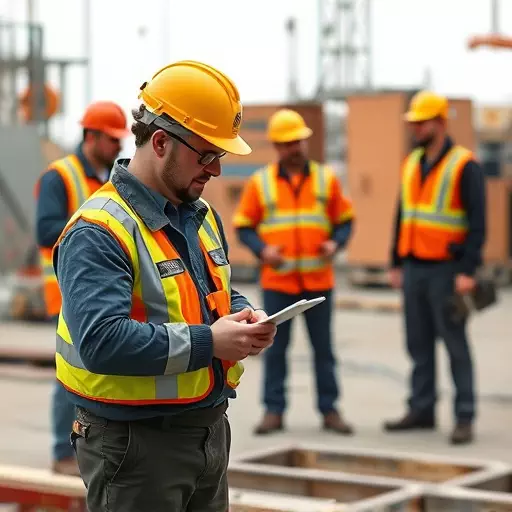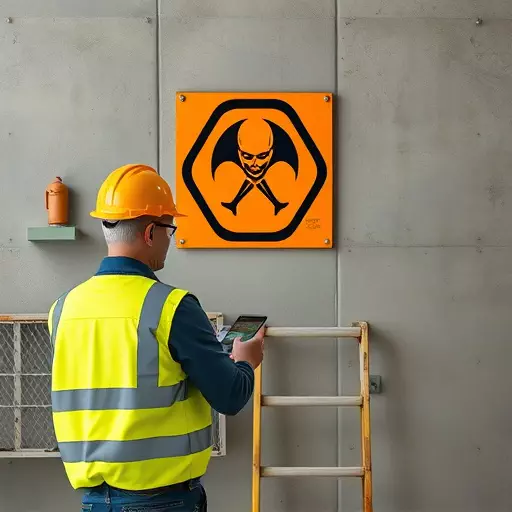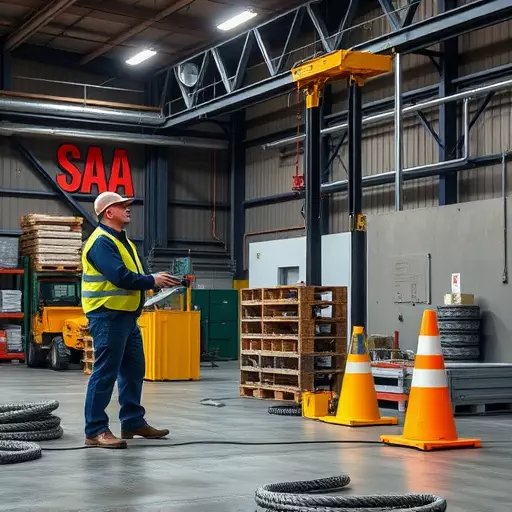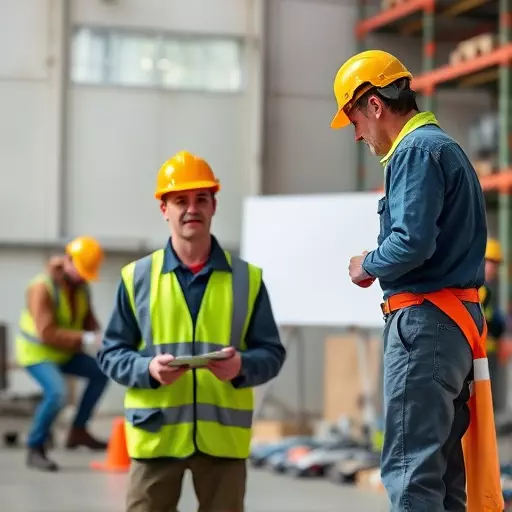In today's digital era, effective workplace safety training, emphasizing hazard identification and fall protection, is paramount. OSHA compliance training, focusing on risk assessment, proper use of PPE like harnesses and lanyards, enhances individual safety and fosters a culture of comprehensive workplace safety. Hazard identification equips workers to recognize risks, including falls, chemical exposure, noise, electrical dangers, and ergonomic issues, reducing accidents and upholding OSHA regulations. Fall protection equipment, crucial for hazardous environments, includes harnesses, lanyards, ropes, and anchor points that must be properly fitted, attached, understood, and maintained. Regular workplace safety training sessions reinforce best practices, ensure OSHA compliance, and reduce fall-related incidents across industries like construction and manufacturing, fostering a culture of safety consciousness.
In the realm of workplace safety training, fall protection is a paramount concern. With proper understanding and implementation, it can revolutionize job sites, fostering a culture of safety and preventing devastating accidents. This article delves into essential aspects of fall protection, including hazard identification training, OSHA compliance, and equipment proficiency. From recognizing risks to developing robust programs, these strategies ensure the well-being of workers across various industries. Explore real-world case studies, highlighting successful implementations that underscore the impact of comprehensive fall protection training.
- Understanding Fall Protection: Why It's Crucial for Workplace Safety Training
- Identifying Hazards: A Key Component of OSHA Compliance Training
- The Basics of Fall Protection Equipment and its Correct Usage
- Developing a Comprehensive Fall Protection Program: Best Practices
- Case Studies: Successful Implementation of Fall Protection Training in Real-World Scenarios
Understanding Fall Protection: Why It's Crucial for Workplace Safety Training

In today’s digital era, navigating workplace safety training is more critical than ever to prevent accidents and injuries. Understanding fall protection is a cornerstone of comprehensive workplace safety training. Falls pose significant risks across various industries, from construction sites to industrial facilities, and their consequences can be severe. Therefore, incorporating fall protection training into your OSHA compliance training regimen is essential for protecting workers and ensuring regulatory adherence.
This training should cover hazard identification, risk assessment, and the proper use of personal protective equipment (PPE) such as harnesses and lanyards. By equipping employees with knowledge about potential fall hazards present in their work environment, they can actively participate in creating a safer workplace. This proactive approach not only enhances individual safety but also fosters a culture of comprehensive workplace safety training.
Identifying Hazards: A Key Component of OSHA Compliance Training

Identifying hazards is a fundamental aspect of comprehensive workplace safety training and is crucial for achieving OSHA compliance. It involves recognizing potential risks and dangers in the work environment, which could lead to injuries or illnesses among employees. This process requires careful assessment of various factors such as equipment, materials, working conditions, and tasks performed.
During hazard identification training, workers learn to spot common workplace hazards like fall risks, exposure to chemicals, noise, electrical dangers, or ergonomic issues. They are equipped with the knowledge to understand the potential consequences of these hazards and implement preventive measures. This enables a safer work environment, reduces accidents, and ensures that OSHA regulations are met, fostering a culture of responsibility for workplace safety among employees.
The Basics of Fall Protection Equipment and its Correct Usage

Fall protection equipment is designed to safeguard workers from potential falls in hazardous environments. Understanding the basics and correct usage of this gear is paramount for any comprehensive workplace safety training program. This includes familiarizing employees with various components such as harnesses, lanyards, ropes, and anchor points. Each piece plays a crucial role in the overall fall protection system, ensuring that if a fall occurs, the force is arrested safely, minimizing the risk of severe injuries or fatalities.
The correct application of this equipment involves proper fitting, secure attachment to anchorages, and understanding different types of connections. Regular maintenance checks are also essential to guarantee their integrity and functionality. By integrating these practices into hazard identification training, workers can recognize potential risks and take proactive measures. Compliance with OSHA (Occupational Safety and Health Administration) standards through comprehensive osha compliance training ensures a safe working environment, reducing accidents and promoting workplace safety.
Developing a Comprehensive Fall Protection Program: Best Practices

Developing a comprehensive fall protection program is paramount for any industry where workers are at risk of falls from heights. It involves a multi-faceted approach, starting with thorough hazard identification training to recognize potential risks and implement appropriate controls. This includes assessing work areas, understanding equipment limitations, and educating employees on the proper use of fall protection gear such as harnesses, lanyards, and guardrails.
Regular workplace safety training sessions are essential for reinforcing best practices and keeping up with OSHA compliance standards. These trainings should cover not only the technical aspects of fall protection but also human factors, like communication, teamwork, and individual responsibility. By fostering a culture of safety consciousness and continuous improvement, companies can significantly reduce fall-related incidents and create a safer working environment for all employees.
Case Studies: Successful Implementation of Fall Protection Training in Real-World Scenarios

Fall protection training is not just theoretical; its value shines through in real-world applications. Case studies from various industries demonstrate the successful implementation of fall protection measures, significantly enhancing workplace safety training. For instance, construction sites have seen dramatic improvements in OSHA compliance training after introducing rigorous hazard identification training programs. These programs educate workers on recognizing and mitigating risks associated with heights, leading to a substantial reduction in fall-related incidents.
Additionally, manufacturing facilities have adopted similar strategies, where regular training sessions have empowered employees to identify potential hazards and implement preventive measures. This proactive approach has not only improved safety records but also fostered a culture of continuous improvement, ensuring that workplace safety remains a top priority.


